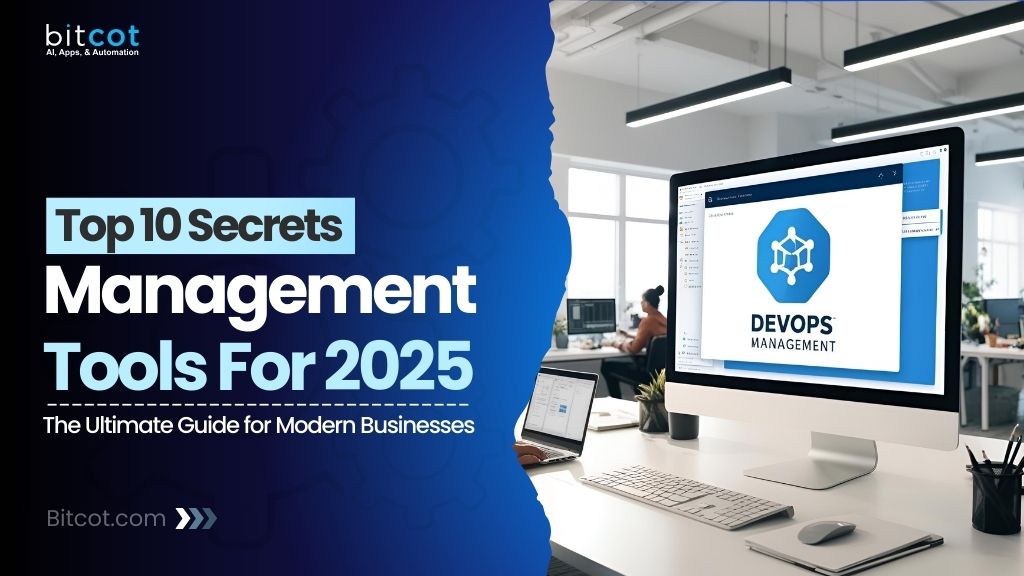Automated secrets management is revolutionizing how organizations protect sensitive data like API keys, passwords, and security certificates. In an era where data breaches can cripple businesses, automating the management of secrets ensures they are securely stored, rotated, and accessed without human intervention. This blog delves into the importance of automated secrets management, its benefits, and practical steps for implementation in 2025.
What Are Secrets and Why Do They Need Management?
Secrets are sensitive credentials that grant access to critical systems and data, such as database passwords, API tokens, and encryption keys. If mishandled or exposed, secrets can lead to unauthorized access and catastrophic breaches. Automated secrets management systems centralize and secure these credentials, reducing the risk of exposure through hardcoded code or manual errors.
Benefits of Automated Secrets Management
Enhanced Security Through Automation
Manual secrets management is prone to errors, such as leaving credentials in publicly accessible repositories. Automated systems eliminate these risks by storing secrets in secure vaults, encrypting them, and enforcing access controls. In 2025, tools like HashiCorp Vault and AWS Secrets Manager use advanced encryption and role-based access to protect secrets, ensuring only authorized entities can access them.
Streamlined Compliance
Regulatory frameworks like GDPR, PCI-DSS, and HIPAA require strict control over sensitive data. Automated secrets management simplifies compliance by providing audit trails, automated rotation policies, and centralized access controls. Organizations can demonstrate compliance with minimal effort, reducing the risk of penalties.
Reduced Operational Overhead
Manually rotating passwords or updating API keys across multiple systems is time-consuming and error-prone. Automated secrets management tools handle these tasks seamlessly, rotating credentials at predefined intervals or on-demand. This frees up IT and security teams to focus on strategic initiatives rather than repetitive tasks.
Key Features of Automated Secrets Management Tools
Secret Rotation and Lifecycle Management
Automated rotation ensures secrets are updated regularly, reducing the window of opportunity for attackers. In 2025, tools support dynamic secrets, generating temporary credentials for each session, which expire after use. This minimizes the risk of long-lived credentials being compromised.
Integration with CI/CD Pipelines
Modern development pipelines require seamless integration with secrets management. Tools like HashiCorp Vault and Azure Key Vault integrate with CI/CD platforms, allowing developers to access secrets securely during builds without hardcoding them. This aligns with DevSecOps principles, embedding security into development workflows.
Audit and Monitoring Capabilities
Automated secrets management systems provide detailed logs of who accessed what secrets and when. This transparency is crucial for detecting suspicious activity and ensuring compliance. In 2025, AI-driven monitoring enhances these capabilities by identifying anomalies in real time.
Implementing Automated Secrets Management
Choose the Right Tool
Selecting a secrets management tool depends on your organization’s needs. Cloud-native solutions like AWS Secrets Manager are ideal for cloud-centric environments, while open-source options like HashiCorp Vault offer flexibility for hybrid setups. Evaluate tools based on scalability, integration capabilities, and ease of use.
Define Access Policies
Role-based access control (RBAC) is critical for secure secrets management. Define granular policies to ensure only authorized users and applications can access specific secrets. Regularly review and update these policies to align with organizational changes.
Automate Secret Rotation
Set up automated rotation policies to minimize the risk of compromised credentials. For example, rotate API keys every 30 days or after a potential breach. Ensure rotation policies align with application requirements to avoid disruptions.
Challenges and Solutions
Implementing automated secrets management can face resistance due to complexity or lack of expertise. To overcome this, invest in training and start with a pilot project to demonstrate value. Additionally, ensure tools integrate seamlessly with existing systems to avoid workflow disruptions.
The Future of Automated Secrets Management
In 2025, automated secrets management is evolving with AI and zero-trust architectures. AI-driven tools predict potential exposures, while zero-trust principles ensure no entity is trusted by default. As organizations adopt microservices and cloud-native architectures, secrets management will become even more critical to securing distributed systems.
In summary, automated secrets management is a game-changer for securing sensitive data. By automating storage, rotation, and access, organizations can reduce risks, ensure compliance, and streamline operations. As cyber threats evolve, adopting robust secrets management practices will be essential for staying ahead in 2025.


